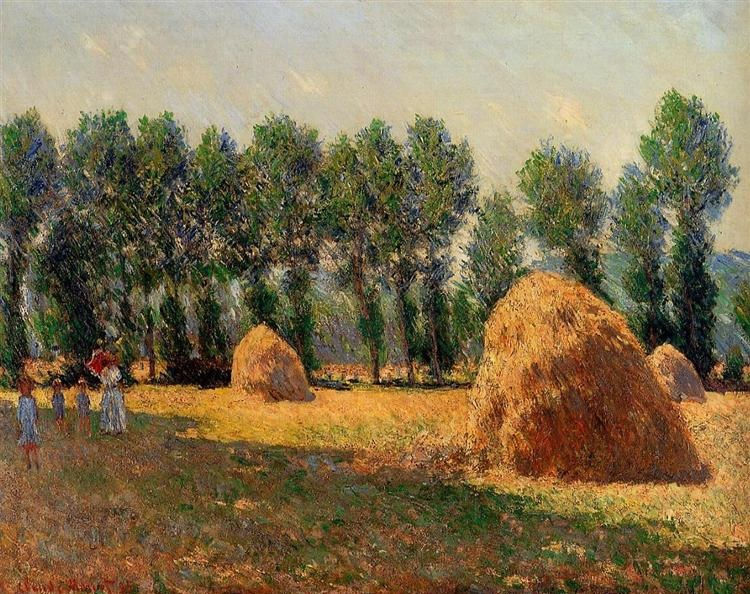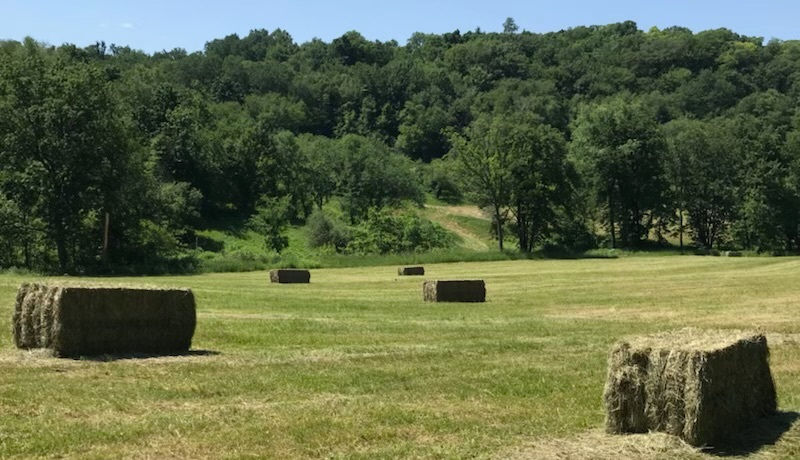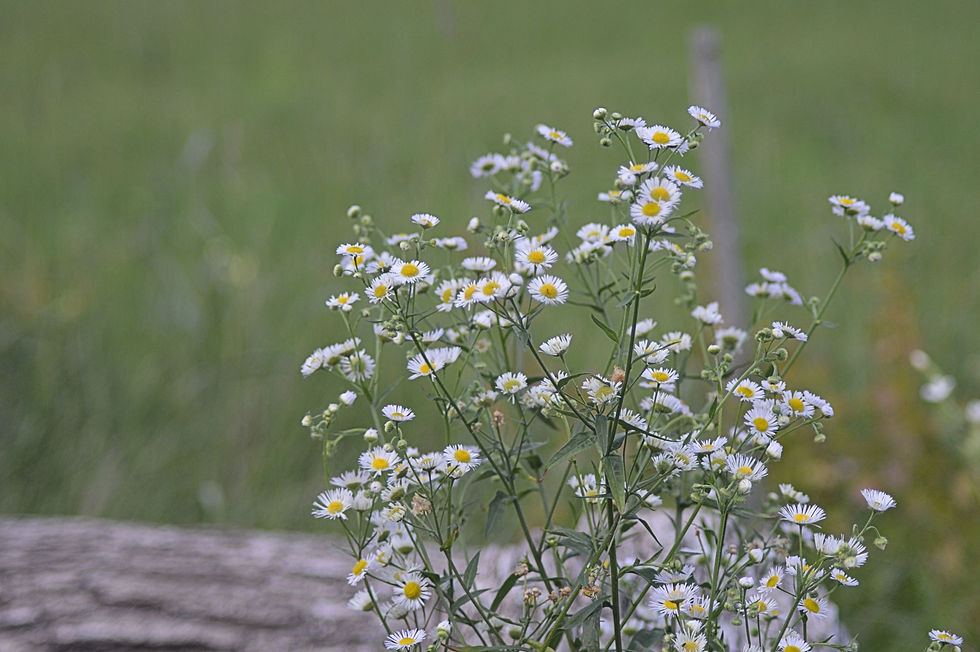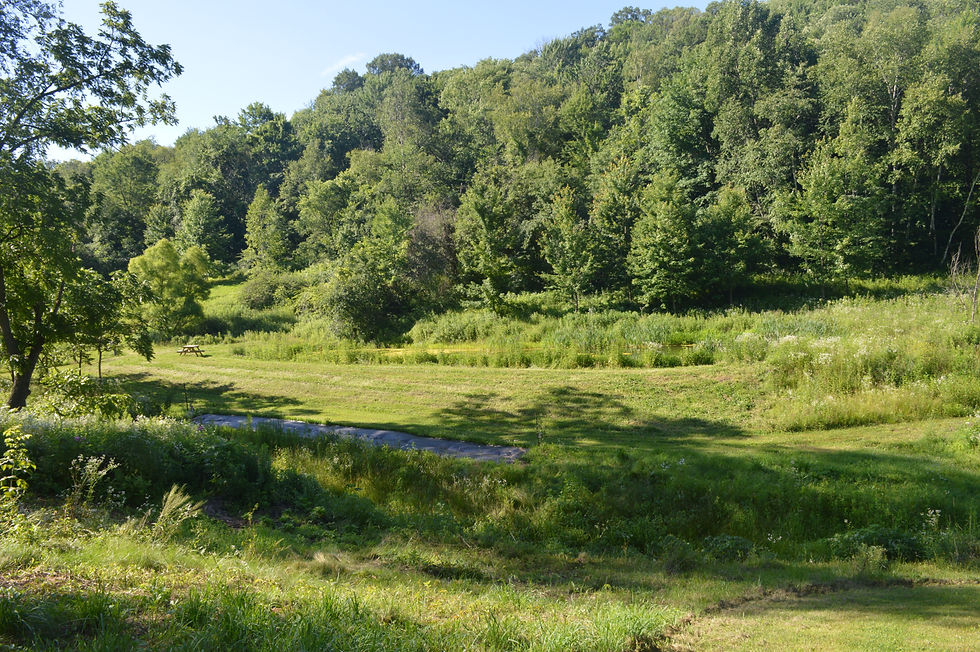The Ag Field (Part 4 of 4)
- Rebecca Clancy
- Apr 23, 2022
- 4 min read
The swales (that is to say, the heavy lifting) were complete. We had finally come to the “fun part.” The “fun part” is the reward for the heavy lifting. It consists of adding those finishing touches which beautify and embellish all the hard work. It’s the same when you renovate a kitchen or bathroom. The heavy lifting is the demolition, plumbing, electrical, cabinets, fixtures, and the like. The “fun part” is when you decorate - hang curtains on the windows and paintings on the walls. The “fun part” is 10% of the work and provides 90% of the satisfaction. It was time to go there with the Ag Field.

The first step was to no-till sow the grass field with clover and alfalfa. A key part of soil health is to avoid tilling. Exposing soil to oxygen is disastrous. Soil is a complex and delicate ecosystem, teeming with microbial life. In fact, one tablespoon of soil contains fifty billion microbes. Try wrapping your mind around that statistic. Exposing soil to oxygen is like dropping a hydrogen bomb on it. It kills all life.
The nearby Amish supply store is staffed with folks who have been indispensable in helping us get the farm up and running. They were able to recommend some local folks that we could hire to help us with the no-till sowing. No-till sowing is really time consuming without the proper equipment, and that’s something we haven’t had the resources to purchase yet.
The benefits to no-till sowing clover and alfalfa into a grass field are incalculable. Clover and alfalfa are both legumes. This means they fix nitrogen, improving the soil and its capacity to fertilize. They attract pollinators. They increase the capacity of the grass field to hold water. They improve the forage for the livestock. Not to mention they add biodiversity.
We then turned our focus to the Ag Field’s peripheries. Since we wanted to keep the Ag Field a grass field, (and with everything we added it’s still over 90% grass) we looked for places to plant in the margins where the grass yield would not be reduced.
One fence line proved perfect for honeybee hives. Around here, you don’t have to look far to find a beekeeper who will rent hive space from you in exchange for honey. Honey bees are, believe it or not, wonderful livestock. They do not sting. Their first few days in a new environment, they bump into you a bit to identify you. Then they mostly go to and from their water source. They keep themselves, literally, as busy as bees.
Around the hives then there was a bit of growing space. We positioned some old straw bales on either side of the hives, riddled them with topsoil, and planted winter squash in them. Winter
squash is grossly unappreciated. It tends to blush unseen. It’s one of those under valued foods that is delicious, nutritious, versatile, and keeps for months when stored properly.
Granted, it’s hard to cut. Necessity being the mother of invention, I lit upon the so-called “Machete Method.” This consists of microwaving the winter squash for a few minutes, then wielding the machete after the fashion of an executioner at a beheading (this should be done out of doors). You can then scoop out the seeds and get at the meat fairly easily.
Where to get a machete, you may wonder? In a word, Walmart. When I purchased mine, as I went through the self-check out, the red light at the register activated. I began frisking myself for my I.D. so as to prove I was an adult responsible enough to own a machete. It turned out that the red light was activated for the cough medicine. It’s that easy to buy a machete.
At any rate, you don’t want your winter squash in your kitchen garden. It takes over. But why near the honey bees? It gives us an excuse to visit them frequently, and for the honey bees and us to bond. If you find this incredible, you reveal yourself as someone with no experience of honey bees. There is something pet-like about them.
Next we added some stick stacks to a corner. A logger had taken down a few of our walnut trees, and when a logger takes down walnut trees, or any trees for that matter, they leave the crowns of the trees behind. We made firewood out of most of them, but that left a lot of sticks. We used the grapple to make huge stick stacks that look just like Monet’s Haystacks. The song birds simply love them. Hundreds lite in them every day.

Nearing the end, we fenced a large kitchen garden and lined it with landscape cloth; we planted prairie flowers on fence lines; we planted, in an out of the way spot, a grove of sea buckthorns which, alongside aronia berries, are the new super fruit.
And there you have it. The Ag Field became a permaculture paradise.
If you lay the groundwork, Mother Nature will more than meet you halfway. She is your mother, after all.








Comments